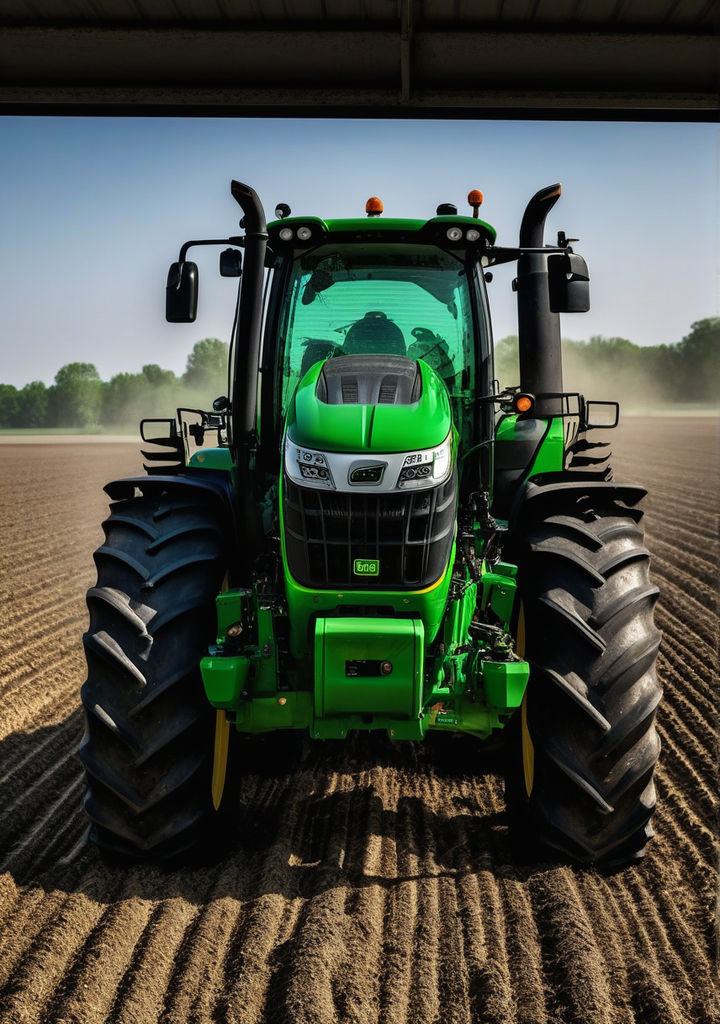
The hydraulic system in John Deere 8R Series tractors is crucial for powering essential functions such as lifting equipment, controlling implements, and steering. Given the complexity and importance of this system, understanding common hydraulic issues and their solutions can help keep your tractor running smoothly and efficiently. In this guide, we’ll explore common hydraulic system problems, their symptoms, and practical solutions to address them.
1. Overview of the Hydraulic System in John Deere 8R Series Tractors
The hydraulic system in the John Deere 8R Series tractors is designed to deliver high-pressure fluid to various components, enabling precise control and powerful performance. The system includes hydraulic pumps, valves, cylinders, and hoses that work together to operate attachments and control steering.
2. Common Hydraulic System Problems and Symptoms
2.1. Low Hydraulic Pressure
Symptoms: Reduced lifting power, sluggish response from hydraulic functions, and erratic operation of implements.
Causes: Low hydraulic pressure can be caused by several factors, including:
- Low Hydraulic Fluid Level: Check the fluid level in the hydraulic reservoir.
- Worn Hydraulic Pump: Over time, the hydraulic pump can wear out, leading to decreased pressure.
- Clogged Hydraulic Filters: Dirty or clogged filters can restrict fluid flow.
Solution:
- Check Fluid Levels: Ensure that the hydraulic fluid is at the recommended level. Top off if necessary.
- Inspect the Hydraulic Pump: If the pump is worn or damaged, consider replacing it. Consult the John Deere service manual for specifications.
- Replace Filters: Clean or replace the hydraulic filters to restore proper fluid flow.
2.2. Hydraulic Leaks
Symptoms: Visible fluid leaks around hydraulic hoses, cylinders, and connections. You might also notice a drop in hydraulic fluid levels.
Causes: Leaks can result from:
- Damaged Hoses or Fittings: Over time, hoses can become brittle or develop cracks.
- Worn Seals: Hydraulic seals can degrade and cause leaks.
Solution:
- Inspect Hoses and Fittings: Replace any damaged hoses or fittings. Use OEM parts for best results.
- Replace Seals: Identify and replace any worn seals to prevent further leakage.
2.3. Erratic or Unresponsive Hydraulic Controls
Symptoms: Hydraulic controls may operate erratically or fail to respond properly, leading to issues with equipment operation.
Causes: Possible causes include:
- Faulty Hydraulic Valves: Valves that control fluid flow may become stuck or malfunction.
- Air in the Hydraulic System: Air trapped in the system can cause erratic operation.
Solution:
- Inspect and Clean Valves: Check the hydraulic valves for any signs of malfunction or blockage. Clean or replace them as needed.
- Bleed the Hydraulic System: Follow the manufacturer’s procedure to bleed air from the hydraulic system. This usually involves operating the controls while the tractor is running to expel trapped air.
2.4. Overheating of Hydraulic Fluid
Symptoms: The hydraulic system may exhibit reduced performance, and you might notice an increase in fluid temperature.
Causes: Overheating can be caused by:
- Overuse or High Load: Excessive use or heavy loads can raise fluid temperature.
- Faulty Cooling System: If the hydraulic cooler is not functioning properly, it can lead to overheating.
Solution:
- Monitor Usage: Avoid overloading the tractor or running the hydraulic system continuously under heavy loads.
- Check the Cooler: Inspect the hydraulic cooler for proper operation. Clean or replace it if necessary to ensure efficient cooling.
3. Preventative Maintenance Tips
3.1. Regular Fluid Checks
- Inspect Fluid Levels: Regularly check the hydraulic fluid level and top it off as needed. Use the recommended type of hydraulic fluid for your tractor.
3.2. Routine Inspections
- Check for Leaks: Periodically inspect hoses, fittings, and cylinders for signs of leakage or damage.
3.3. Maintain Hydraulic Filters
- Replace Filters: Regularly replace hydraulic filters according to the maintenance schedule in the John Deere service manual.
3.4. Keep the System Clean
- Avoid Contaminants: Ensure that the hydraulic system remains free from contaminants by using clean tools and maintaining a clean work environment.
4. Conclusion
Maintaining the hydraulic system in your John Deere 8R Series tractor is essential for optimal performance and longevity. By recognizing common hydraulic problems, addressing symptoms promptly, and following preventive maintenance tips, you can ensure that your tractor remains reliable and efficient. Regular checks and proper care will help avoid costly repairs and keep your tractor running smoothly for years to come.
FAQs
Q1: How often should I check the hydraulic fluid level in my John Deere 8R Series tractor?
- A: It’s advisable to check the hydraulic fluid level before each use, especially if you notice any performance issues. Regular checks help maintain optimal system performance.
Q2: What type of hydraulic fluid should I use for my John Deere 8R Series tractor?
- A: Use the hydraulic fluid recommended in the John Deere owner’s manual. Typically, this will be a high-quality fluid designed for agricultural machinery.
Q3: How can I prevent hydraulic system issues in my tractor?
- A: Regular maintenance, including fluid checks, filter replacements, and inspections for leaks, can help prevent hydraulic system issues. Adhering to the recommended maintenance schedule will also contribute to system reliability.

